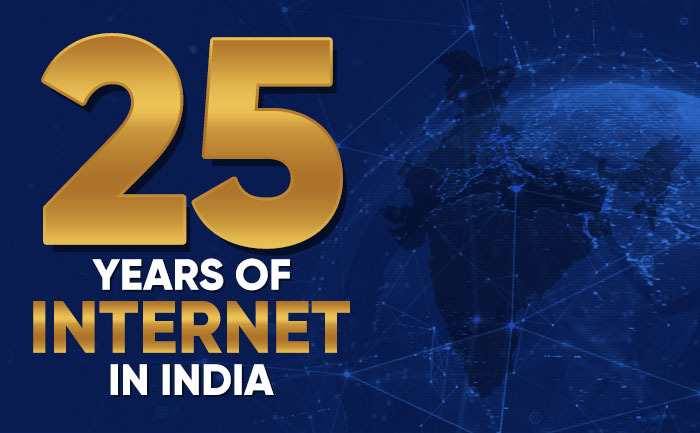- Sponsored -
25 years of Internet in India: Here Are Some Fun Facts About Internet
Indian internet turns 25 today; here are some of the fun facts of the internet

On August 15, 2020 India celebrated its 74th year of independence. But not many know that the country has also reached another important milestone. Twenty-five years ago, Indian citizens accessed the Internet for the first time. Yes, on 14 August 1995, commercial internet services were rolled out by the state-owned Videsh Sanchar Nigam Ltd (VSNL). VSNL’s Gateway Internet Access Service gave the average Indian their first taste of the World Wide Web.
- Sponsored -
According to a Times of India report from August 15, 1995, the basic tariff for a single user was Rs 5,000 per month for a 9.6 kbps dial-up connection for 250 hours of usage. Today India has some of the lowest mobile data prices in the world at Rs 7 per GB.
Today, our total active internet user base is estimated to be 574 million. It will soon reach 639 million by the end of 2020, according to Kantar.
In present times as the world is facing the bane of COVID-19 pandemic, the internet is like manna from heaven. Due to the lockdown, as the world stayed confined to their houses, the flexibility to work from home kept certain businesses from collapsing. Family and friends stayed in touched all thanks to the net. It kept the global population from going hungry as we could order things without venturing out.
Here are some fun facts of the internet most of us are unaware of:
1. The first search engine, named Archie was launched in 1990. It was followed by Veronica and Jughead. Google arrived in 1998.
2. The Internet has also paved the path for memes that have, over the years, become a cultural phenomenon to express a lot of feelings with a simple use photo, gif, or video.
3. In 2018, Gary Davis of McAfee Inc predicted that the number of connected devices in 2020 would hit 50 billion.
4. Over 55 percent of the over 4 billion internet users are Asians.
5. The first-ever transaction over the Internet was carried out by students from Stanford University in California and MIT in Massachusetts for a bag of marijuana.
6. Today, there are around 380 underwater cables in operation, spanning a length of over 745,645 miles. Around 99 percent of transoceanic data moves through undersea cables. This accounts for phone calls, text message, and Internet usage.
7. The Internet has seven “Keyholders”, in the event of a global shutdown, these keyholders will be able to reboot an integral part of the system.
courtesy moneycontrol.
Also Read: Internet Suspended in Parts of India Following The Ayodhya Verdict
- Sponsored -
